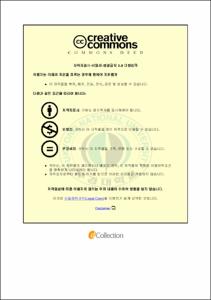일본어 동사의 사역과의 관계
- Abstract
- The relationship of a causativity between japanese verbs
Kong, Mi-Hee
Department of Language and Literature of Japanese,
The Graduate School,
Pukyong National University
Abstract
This study is about the relationship between the causative of Japanese verbs, which was analyzed separately and respectively into five chapters.
In the first chapter, an analysis of the relationship between transitivity and causative of the “intransitive (sa) seru” form is shown. It states a classification reference point based on the semantic property of transitivity and causative and the meaning of the intransitive (sa) seru is not extremes of transitivity and causative but a continuity in a single line on it. It was proved by a process of intermediate stages in accordance with the varying degrees of transitivity and causative properties.
In the second chapter, in relation to being the causative of transitive, one of the transitive verb morphemes 「-as-」, 「-os-」, 「-s-」, 「-se-」 is represented as the continuity in aspects of morphological and (sa) seru of the causative morpheme. Then in this sense, if the intention and activity of the subject to target are direct, they may represent the meaning of typical transitivity. Even the intention and activity of the subject to the target have if it is direct or indirect, and it gives instruction or command to the target by the intention of the subject, outreaches indirect, etc., and setting the classification of ranging the meaning of the causative typical situation is realized by the will and the activity of the target it could be.
In the third chapter, there has been analyzed for syntactic features, meaning of recursive causative sentence. Verb is used to state adverbially syntax in the dependent clause「〜V1させたまま」「〜V1させて」「〜V1させながら」「〜V1させ」 was found that the meanings or Operating of parallel and state.
As a semantic character, 1) there is activity and intention in GA case 2) but there is intention of no activity GA case 3) there is no intention and only the activity GA case 4) there is no intention and no activity GA case. I had a look at the features of semantic recursion causative sentence, categorized into four for example.
In the fourth chapter, when the verb (sa) seru shape represents the meaning of the causative, intermediate meaning of transitivity and causative, the meaning of the transitivity, it also forms a continuity with each other. transitive and intransitive forms a continuity through reflexive use. it forms a continuity on the whole and activity continuation, result continuation = stative Perfect, actional perfect, and simply state in semantic characteristic aspect te-iru, that it forms a continuity through the stage was.
In the fifth chapter, the basic meaning in the causative passive sentence is that when you feel the damage and sense of force reluctantly, actor is acting on by some influence or instruction of causative subject. However, there is not just this sense of causative passive sentence, and the meaning of the causative passive sentence changed behavior mainly by how it is influenced from causative primarily, of the verb in the causative sentence the basic fundamental I based on the characteristics of semantic (sa) seru form.
- Issued Date
- 2013
- Awarded Date
- 2013. 8
- Type
- Dissertation
- Publisher
- 부경대학교
- Affiliation
- 대학원
- Department
- 대학원 일어일문학과
- Advisor
- 손동주
- Table Of Contents
- 目次
第1章序論 1
1.1研究目的 1
1.2先行研究の考察 4
1.3研究方法 24
第2章自動詞の(sa)seru形と使役·他動との関係 28
2.1自動詞の(sa)seru形の意味 28
2.2使役と他動との関係 30
2.3自動詞の(sa)seru形が不可能な場合 34
2.3.1有対自動詞の場合 36
2.3.2無対自動詞の場合 37
2.4自動詞の(sa)seru形の分類 39
2.4.1使役の意味 39
2.4.1.1指示·命令 39
2.4.1.2説得 40
2.4.1.3配慮 41
2.4.1.4許諾 42
2.4.1.5放任 42
2.4.2使役と他動の中間的な意味 43
2.4.2.1有性名詞としての使役主体と被使役主体に動作がある場合 43
2.4.2.2対象が交通機関や機械類1 44
2.4.2.3不注意 44
2.4.2.4誘発1 45
2.4.2.5主語の対象に対する間接的な影響 46
2.4.2.6対象の本性と自発性1 46
2.4.2.7感情動詞(誘発2) 47
2.4.2.8責任 47
2.4.2.9自然現象1 48
2.4.3他動の意味 49
2.4.3.1対象の本性と自発性2 49
2.4.3.2自然現象2 49
2.4.3.3対象が交通機関や機械類2 50
2.4.3.4結果より過程に焦点を置いた場合 50
2.4.3.5主語の直接的な動作による場合 51
2.5使役の定義 52
2.6他動の定義 53
2.7自動詞の(sa)seru形の使役と他動との関係 54
第3章他動詞の使役化との関係 63
3.1他動性のプロトタイプ 64
3.2使役性のプロトタイプ 66
3.3他動詞での使役化 68
3.3.1形態的連続性 69
3.3.2意味的連続性 73
3.3.2.1対象に直接的働きかけがある場合 74
3.3.2.1.1主語に意図と動作がある場合 74
3.3.2.1.1.1典型的他動の意味の場合 74
3.3.2.1.1.2道具利用 74
3.3.2.1.1.3対象が交通機関及び機械類の場合1 75
3.3.2.1.1.4対象の本性及び自発性1 76
3.3.2.2対象に直接的·間接的働きかけがある場合 76
3.3.2.2.1主語に意図と動作がある場合 76
3.3.2.2.1.1対象が交通機関及び機械類の場合2 76
3.3.2.2.1.2対象に機能性がある場合 77
3.3.2.2.1.3対象の本性及び自発性2 78
3.3.2.2.1.4対象の生理的状態変化1 78
3.3.2.3対象に間接的働きかけがある場合 79
3.3.2.3.1主語に意図と動作がある場合 79
3.3.2.3.1.1有性名詞として主語と対象に動作がある場合 79
3.3.2.3.2主語に意図はなく動作がある場合 80
3.3.2.3.2.1対象の生理的状態変化2 80
3.3.2.3.2.2自然現象 81
3.3.2.3.2.3不注意1 81
3.3.2.3.2.4主語が機械類及び交通機関の場合 82
3.3.2.3.3主語に意図も動作もない場合 82
3.3.2.3.3.1対象の本性及び自発性3 82
3.3.2.3.3.2対象の生理的状態変化3 83
3.3.2.3.3.3対象の心理的状態変化 84
3.3.2.3.3.4責任 84
3.3.2.3.3.5不注意2 85
3.3.2.3.4主語に意図はあるが動作がない場合 86
3.3.2.3.4.1第3者の介入 86
3.3.2.3.4.2語彙的使役 87
3.3.2.3.4.3典型的使役文 87
第4章再帰使役文に関する考察 90
4.1再帰動詞 91
4.2再帰用法 93
4.3使役動詞の認定範囲 97
4.4再帰使役文の構文的特徴 99
4.4.1〜が〜を〜Vさせる 100
4.4.2〜が〜副詞的要素〜を〜Vさせる 100
4.4.3〜が〜を〜V1させたまま〜V2する 101
4.4.4〜が〜を〜V1させて〜V2する 102
4.4.5〜が〜を〜V1させながら〜V2する 103
4.4.6〜が〜を〜V1させ〜V2する 104
4.5再帰使役文の意味的特徴 105
4.5.1ガ格に意図と動作がある場合 106
4.5.1.1ヲ格名詞がガ格名詞の身体部分である場合 106
4.5.1.2ヲ格名詞がガ格名詞の所有物である場合 106
4.5.1.3ヲ格名詞がガ格名詞の精神、属性などの場合 107
4.5.1.4ヲ格名詞がガ格名詞の行為の結果である場合 108
4.5.2ガ格に意図のみがあって、動作がない場合 109
4.5.2.1ヲ格名詞がガ格名詞の身体部分である場合 109
4.5.2.2ヲ格名詞がガ格名詞の精神、属性などの場合 110
4.5.3ガ格に意図はなく、動作のみある場合 110
4.5.3.1ヲ格名詞がガ格名詞の身体部分である場合 111
4.5.3.2ヲ格名詞がガ格名詞の内部作用の所産である場合
111
4.5.3.3ヲ格名詞がガ格名詞の行為の結果である場合 112
4.5.4ガ格に意図も動作もない場合 112
4.5.4.1ヲ格名詞がガ格名詞の身体部分である場合 113
4.5.4.2ヲ格名詞がガ格名詞の所有物である場合 113
4.5.4.3ヲ格名詞がガ格名詞の精神、属性などの場合 114
4.5.4.4ヲ格名詞がガ格名詞の行為の結果である場合 115
第5章動詞の(sa)seru形の意味分類によるテイルに関する考察
118
5.1動詞の(sa)seru形の意味 120
5.2テイルの意味 123
5.3動詞の(sa)seru形+テイルの意味的特徴 126
5.3.1典型的な使役の意味とテイル 126
5.3.1.1指示·命令 126
5.3.1.2配慮 127
5.3.1.3許諾 128
5.3.1.4放任 129
5.3.2使役と他動の中間的な意味とテイル 131
5.3.2.1主語が交通機関や機械類の場合 131
5.3.2.2対象の本性と自発性1 132
5.3.2.3生理的状態変化 133
5.3.2.4心理的状態変化 135
5.3.2.5自然現象 136
5.3.3他動の意味とテイル 137
5.3.3.1対象が交通機関や機械類の場合 137
5.3.3.2対象の本性と自発性2 138
5.3.3.3主語の直接的な動作による場合 139
5.3.4再帰用法とテイル 141
第6章動詞の(sa)seru形の意味分類による使役受身文に関する考察
145
6.1使役受身文 145
6.2動詞の(sa)seru形+受身接辞(ra)reruの意味的特徴 146
6.2.1使役文が典型的な使役の意味である場合 146
6.2.1.1指示·命令 147
6.2.1.2配慮 148
6.2.1.3許諾 150
6.2.1.4放任 151
6.2.2使役文が使役と他動の中間の意味である場合 153
6.2.2.1対象が交通機関や機械類1 153
6.2.2.2不注意 154
6.2.2.3誘発1 155
6.2.2.4対象の心理的状態変化(誘発2) 157
6.2.2.5対象の生理的状態変化 158
6.2.3使役文が他動の意味である場合 160
6.2.3.1対象が交通機関や機械類2 160
6.2.3.2主語の直接的な動作による場合 162
第7章結論 166
参考文献 179
用例出典 186
- Degree
- Doctor
- Files in This Item:
-
-
Download
 일본어 동사의 사역과의 관계.pdf
기타 데이터 / 2.19 MB / Adobe PDF
일본어 동사의 사역과의 관계.pdf
기타 데이터 / 2.19 MB / Adobe PDF
-
Items in Repository are protected by copyright, with all rights reserved, unless otherwise indicated.